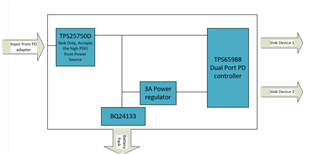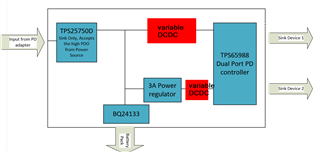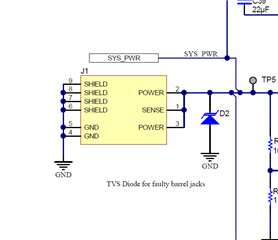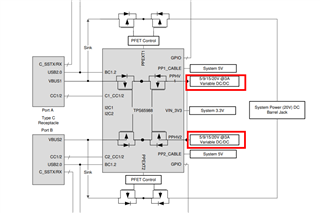Hi,
I have four main components. 1: Dock station for Tablets. 2: Wireless charger for Cell phone. 3: Custom PCB Board. 4: Battery. The dock station is connected with an external PD adapter. This input power is also shared with a custom PCB board. The custom PCB board will simply connect the input power with a wireless charger and dock station depending on which power source is active. If the PD adapter is active then custom PCB will transfer power from the dock station to the wireless charger and charge the battery. When input power is not available then a custom PCB board will connect the battery power with a wireless charger and dock station.
Now I need help in choosing the IC that can manage power sources i.e. if an input adapter is present then the battery will only charge and when the input adapter is not present then connect the battery pack with the rest of the system but as soon, input power came back to switch to the input supply again. The main idea is the same as UPS supply.


 .
.




